Quick note: It’s never occurred to me that my ‘Tip Jar’ link may be a tad obscure and buried at the bottom, as I’ve gotten several emails from people not knowing how to donate. Allow me to place the full link as reminder, this is my official Tip Jar: buymeacoffee.com/Simplicius
Thanks to all the contributors who do throw some coin on there, as it is a big monthly help. Now back to our regularly scheduled programming.
The latest Economist piece takes us to a Ukrainian bunker outside the besieged town of Chasov Yar. It contains a few interesting items that converge with current goings on.
Chasov Yar is a unique front because unlike most of the other fronts, where a major disparity exists between elite troops of one side and mobilized defenders of the other, here they are evenly matched. One of Ukraine’s most elite brigades, the 92nd Assault Brigade, is defending against Russia’s elite 98th Airborne Division, making the fights particularly hellacious and unforgiving. The 92nd were one of the foremost brigades taking part in the Kharkov offensive of late 2022, earning themselves many medals and state honors in the process as they drove Russian forces out of Izyum and Kupyansk.
The article describes their air defense battalion—consisting of 250 troops—as having its own radar terminal showing all Russian air activity in their vicinity. If true, it gives an eye-opening account of what they can see and track: Smerch missiles passing over them at 900mph, Russian jets to a depth of 50km unleashing glide-bombs, which their radar allegedly tracks—though they have no way to shoot them down.
One noteworthy point from the article underscores something I wrote last time, that at this point most Ukrainian officers and officials are no longer fighting for 2022 or 1991 borders, but rather for simple survival:
A year ago, as Ukraine readied for its counter-offensive, just holding its own positions was considered the most pessimistic scenario. Now, as Russia prepares for a fresh push, it is considered the best case. From soldiers to generals, everyone The Economist spoke to over the past week knows that Ukraine lacks the resources to get back to its 1991 borders, as its politicians have promised. “I suggest to anyone who talks of 1991 borders to come as far as Bakhmut,” Colonel Timchenko says, referring to a town Ukraine lost a year ago after months of savage fighting.
At stake now is not Ukraine’s territorial integrity, but its survival.
The commander of the brigade goes on to state that if Konstantinovka falls Russians will very quickly reach the Dnieper; Konstantinovka is the next big strategic center after Chasov Yar whose importance likely even eclipses that of Bakhmut, as Konstantinovka and its neighboring Druzhkovka have classically been the headquarters of the entire Ukrainian ATO/JFO since 2014:
Colonel Pavlo Fedosenko, commander of the 92nd, who helped liberate Kharkiv province in September 2022, is now fighting some 350km south-east of the city. “Everyone knows that if we don’t fight for Kostiantynivka and Druzhkivka [Russia’s probable next target], Russian forces will be in Dnipro, Kharkiv, Kryvyi Rih a few weeks later,” he says.
He thinks there is a “70% chance” that Russia can occupy the rest of the Donbas region. The question is how long it might take, and how much damage Ukraine can inflict in the process.
Note the bolded above.
The article complains that allies have not given enough weapons to Ukraine, implying that if they were to do that Ukraine would magically win. The commander says he gets 5 shells a day for his American Paladin artillery guns. But we just saw the U.S.’ own Paladins using Korean shells in training. Doesn’t Economist get it? There’s nothing left to give—production is maxed out.
Here’s one of the most revealing parts of the article:
Some 70% of the Russian soldiers in such assaults are former convicts, says Colonel Fedosenko. He also sees Tajik, Uzbek, Turkmen, Cuban and Somali mercenaries. Many soldiers have never been in combat before. “Our interceptions suggest they are scraping the barrel, using whoever they can force into battle—cooks, builders, mechanics, anyone.”
This correlates with the latest BBC report from days ago showing that Russia has managed to successfully transfer the majority of its losses onto volunteer and prisoner units:
Note how the vast majority of those who died during the Bakhmut operation from early 2023 until its conclusion in May 2023 were prisoners, i.e. Storm-Z units. Then note how exactly corresponding to the start of the Avdeevka assault, which was early October 2023, the green colored bars representing volunteer casualties jumped and began to dominate.
Why is this important? Those who read my most recent paid article will understand precisely the reason. Russia is carrying out a methodical textbook force management, husbanding its most experienced contract professional soldiers while utilizing the more ‘expendable’ forces in dangerous assaults with higher casualty risks. It sounds callous to say it this way, but this is war, and the side which utilizes its resources smarter wins. Russia is seasoning its best warriors, preserving them while they accumulate vast experience which can be shared and absorbed throughout the entire structure of the armed forces.
I described at the conclusion of the Avdeevka assault how it went down. The 1st Army Corps DPR units like the 114th augmented with Storm-Z penals led the high casualty vanguard assaults, and only after Ukrainian lines began to break did Russia begin introducing elite Spetsnaz and other hardened units as follow-on and breakthrough forces which hunted down the retreating Ukrainians, cutting them off and generally wreaking hell on their lines.
Brief Primer on Volunteers
The only question is: what are volunteers exactly? No one seems to know or clearly understand. The reason for that is the definition drastically changed.
You see, in the beginning of the war, and particularly in the post 2014+ era, a “volunteer” was someone like Russell Bentley who comes of his own will, signs up with little to no training, often or usually doesn’t even get paid, and just gets stuck to a position somewhere. Even in the early ‘wild west’ days of the SMO of 2022, things were more chaotic, disordered, and lax. People could simply go “volunteer” and fight for free virtually without any training at all.
That doesn’t exist anymore. Things have been dramatically tightened up and systematized. But what exactly then is the difference between a volunteer and a regular paid contractor or kontraktniki? You see, a volunteer is a person who walks into an army enlistment office and enlists to join the Russian Army. But doesn’t that just make him a regular soldier of the Russian army? Volunteers now also get paid standard rates, etc.
The differences are now more subtle. Firstly, the Russian army proper prefers to recruit its contract soldiers internally from actual called up conscripts who have just completed their compulsory service bootcamp. As you know, Russia has both a spring and autumn conscription call up. A certain percentage of these will just serve their mandatory 12 months training and go back home, while a percentage will sign a contract to join the army and be sent to the SMO. Not to mention the various military academies from which Russia gets its professional contract officer corps troops.
“Volunteers” on the other hand are generally people who also served their compulsory service long ago, but are now older and have been living their lives, had careers, etc., and have chosen to come and enlist out of a sense of duty or simply for the good pay. However, one of the key differences is that such volunteers often go into separate ‘volunteer’ groups, battalions, brigades, etc., which—although technically under the official auspices of the Russian Armed Forces—are sometimes akin more to a paramilitary or auxiliary structure. I.e. rather than being within real, established, classic Russian formations/brigades, they may operate as a sort of Rosgvardia/National Guard, or Akhmat “special” units, etc.
One of the reasons for this is their training is different and not necessarily “standard” with what the nominal Russian Army conducts on their annual conscripts/recruits. Obviously this training is often highly accelerated and perhaps even more lax given that many volunteers are older to begin with, though there are many different types of specialized “volunteer” units such as the BARS, which are essentially old veterans. There are many different groups, with volunteer units often being grouped into homogenous types like a unit of all over 50+ aged soldiers, or a unit of all foreigners, etc.
However, it’s not necessarily super clear cut and there may be some interoperability or intermixing between the two, i.e. perhaps some volunteers are able to transfer into nominal Russian Army units as regular contract soldiers, etc.
But the main point is that, to some superficial extent, there is no difference between ‘volunteers’ and regular troops. They’re both officially recognized combat troops and are both paid standard rates. But there are key differences in how volunteers are recruited and trained, and the types of units they get into. This is because they come from “outside of the system”. Conscripts who are called up on their annual conscription, on the other hand, are already serving within the nominal formations of the Russian units, i.e. classic, historical units (albeit not inside the SMO, obviously) with which they can subsequently sign contracts and join upon completion of their conscription service / bootcamp.
Also, many volunteer units end up being subordinated into the DPR/LPR structure and are therefore part of the 1st or 2nd AK (Army Corps) rather than the official Russian Armed Forces. Yes, the 1st and 2nd are now officially under Russia, but since that was only semi-recent, it means the organizational realities are still in many ways more DPR than Russia, so to speak—which sometimes means more lax rules, standards, conduct, etc. This is why you often see videos (particularly near-OPSEC-breaking ones) from such units while Russian Army proper have much stricter phone/video codes and you see almost nothing from them apart from officially released videos by the MOD.
Now back to the article, which hilariously again claims that Putin is as-ever gunning for some mystical date:
For now, however, Russian forces continue to advance. While Ukraine is not collapsing, it is losing about 20 sq km a week. Mr Putin may want to inflict maximum damage before nato’s 75th anniversary party in July, to humiliate the West and force Ukraine into negotiations.
Don’t they ever learn?
But the final key topic swings back to Kharkov, where they emphasize the possibility that Russia will soon attack Ukraine’s “second city” in one way or another:
With around 50,000 fresh Russian troops gathering across the border some 40km away, Kharkiv’s commanders know they may be a target in Russia’s next push. One scenario would be to isolate the city by cutting the main road to Kyiv. Another would be to move some 10km closer, putting the city’s eastern outskirts within artillery range and creating a buffer zone to protect Belgorod, a Russian city that is being hit by Ukrainian drones.
This was again repeated by Ukrainian authorities from the Kharkov region just yesterday:
Remember how I said a while back I wouldn’t start believing the stories until credible Ukrainian reports of actual Russian buildups had begun to appear? Well, it seems now they’re starting to appear.
Here’s the most detailed from a Ukrainian military channel yesterday:
The enemy continues to accumulate in the border strip of the temporarily occupied Belgorod and Kursk regions.
About 33-35 thousand orcs have already gathered in the first, and another 13-14 in the second. The number is increasing.
As you can understand, the number of military bases and means of destruction (~430 tanks, 135 units of self-propelled artillery and 388 units of self-propelled and towed artillery) is not enough to conduct a combined military operation and achieve even an operational-tactical goal.
For comparison, at the peak of the Avdiiv operation, there were more than 115,000 personnel of the occupiers.
This is on a section of the front less than 40 km wide (from Krasnohorivka to Krasnohorivka).
The enemy also understands this. Therefore, the meaning of the actions of the occupiers can be reduced to the following:
a) an attack on Vovchansk to enter the rear of our Kupyan group
b) raids in the direction of Kharkiv and Sumy/Glukhov
And both options are quite realistic. They differ only in the final goal.
There is still a third option - border battles on our territory.
No one knows what will happen to them.
But I can say for sure that our guys are ready for any development. Angry and motivated to destroy the enemy🫡
What more can be said - there may be even more indiscriminate strikes on Kharkiv/Sumy. The enemy has a lot of anti-tank missiles up to s-300 and rszv. As well as more accurate ones (shahedy/9m723/х-59/69). And fabs/cabs/other types of tactical aviation weapons. This must be understood.
Believe in ZSU and donate to ZSU! Only our warriors are the guarantor of our safety and the broken plans of the enemy!
So, according to him there’s 35-50k troops and growing, with “~430 tanks, 135 units of self-propelled artillery and 388 units of self-propelled and towed artillery.”
That’s virtually a couple armored divisions and is roughly how much armor Ukraine used in total in the grand Zaporozhye counter-offensive, from recollection.
I agree that the current amount is probably not sufficient to take Kharkov but as far as other objectives, it really depends how strong the Ukrainian reinforcements there are. For instance, even Wiki admits Russia had Kiev entirely yoked up with a tiny 15-30k troops.
Under ‘Battle of Kiev 2022’:
Last year I had already written at length about the potential for Russia to enter from around Vovchansk in order to put pressure on the rear of the Kupyansk group:
With the boa constrictor strategy, Russia can make Kupyansk extremely unstable and the AFU there much more apt to mass retreat.
The Economist article finishes with the Kraken commander likewise agreeing that Russia will attack Kharkov as soon as ‘mid-May’, but believes it will fail:
Konstantin Nemichev is the commander of the famous Kraken regiment, a special-forces outfit formed in the early days of the invasion in 2022 that defended Kharkiv. He expects the enemy to attack the province again in mid-May, but reckons they will fail to get near the city. Interviewed outside a ruined school building in the east of town, the site of an intense firefight in 2022 in which invading soldiers were wiped out, the commander says the defence is much stronger now. It has three lines of fortifications and a full brigade to stop the Russians. “They can move a few kilometres into the province,” he says, “but I don’t think they can get as far as 10km.”
A full brigade to stop the Russians?
The other interesting thing is rumors continue to abound of greatly elevated “activity” on the Kharkov and Sumy borders. Every day channels buzz with new rumors of something out of the ordinary happening. Yesterday, Ukrainians actually blew up a bridge in Vovchansk, which is precisely one of the only key entry points Russia can utilize to cross the border:
This was followed by rumors stating that Russian DRG activity has risen in the “rears” of AFU units in both Sumy and Kharkov regions.
And then this today:
Finally, Russia interestingly published a photo of General Lapin today giving a “readiness check” of the North Group of troops on the Kursk border, which he commands:
Colonel General Aleksandr Lapin inspected the readiness of the troops and "provided practical assistance" to the command of the group covering the state border in the Kursk direction.
In the meantime, Russia continues its infrastructural strikes, with a large one occurring the night before last. Ukraine’s energy grid authority Ukrenergo admitted several key power plants were again hit, this time in the west of the country, and “extensively damaged”:
One writeup had the following details:
Russia continues to conduct a systematic approach in the fire destruction of objects of the energy complex of Ukraine. Thus, in the Burshtyn TPP, only 10 turbogenerators had secondary turbine speed control, a total of 12 turbines. After the previous strikes, 4 turbines remained operational, and this was quite enough to regulate frequency deviations from the nominal value in the evening peaks of electricity consumption. Apparently, they were finished off last night.
At the Dobrotvorskaya TPP, turbo generator No. 1 was finished off, previously only the second turbo generator was defeated. Both were destroyed after the morning strikes.
Another blow was probably inflicted on the Ladyzhinskaya TPP, since the last strikes on April 3, and a month later, on May 3, it started working.Also, Kryvyi Rih TPP has not yet been "calibrated".
As you can see, missile strikes are mainly carried out on thermal power plants with secondary frequency control equipment. They allow you to adjust the frequency from a preset value of 50 Hz. And two of the three TPPs listed above have such equipment.
And one more:
Details of the massive strike on power facilities in the early morning of May 8.
In Poltava, the last autotransformer 330/110kV was attacked, the previous one was destroyed in April. However, judging by the fact that the light did not disappear in Poltava, there is another autotransformer in the city that needs to be destroyed.
In Ladyzhinskaya TPP, the 6th power unit was destroyed and the 5th power unit was damaged. At the Kremenchug hydroelectric power station, a rocket crashed into the cover of hydroelectric unit No. 4 and damaged one of the transformers of hydroelectric unit No. 4.6. Targets to hit are heavy.
A separate report claimed that “all major thermal power plants controlled by Ukraine have now been destroyed or severely damaged” and that “Hydroelectric generation plants are next to reduce the flexibility of Ukraine's grid. After which Ukraine will rely on 3 nuclear power plants and imports from EU countries.”
It’s difficult to verify this as some of them may be only partial hits and more are required to take out additional turbines.
For the record, this was Ukraine’s official shoot down figures for Russian missiles in the attack, make-believe or not:
▪ 33/45 X-101 / X-555;
▪ 4/4 Caliber;
▪ 20/21 Shahed/Geran drones;
▪ 0/1 Dagger (Kinzhal);
▪ 0/2 Iskander-M;
▪ 2/2 X-59 / X-69;
▪ 0/1 Iskander-K.
At night three DTEK thermal power plants were attacked. The equipment is seriously damaged. Managed to shoot down all air targets in the area of the capital.
—
And Russian forces continue to advance a good deal each day. The latest in Krasnogorovka, which is now almost fully enveloped in a cauldron:
North of it, Umanske—west of Avdeevka—was said to have been totally or nearly captured, with one report stating Ukrainian troops have already begun retreating to Skuchne to the west of it:
Also, just south of it Russian troops advanced into the center of Netailove.
This is significant because that represents precisely the Vovcha river defense line we talked so long about being Ukraine’s final backstop defensive line of the region.
Then, Paraskovovka was almost captured west of Novomikhailovka which itself was only recently taken:
This is big because Russian forces are close to cutting Ugledar’s main supply route to the largest regional HQs:
That means Ugledar’s time is almost up. After that road is cut, things will begin getting increasingly difficult and go down the tubes for Ukraine in Ugledar which will be increasingly isolated and vulnerable.
ISW confirmed most of these advances:
Lastly, the realizations are slowly setting in and Ukrainian figures are conditioning the public for the eventuality:
"We may lose the entire Donetsk region, but this does not mean that the war is lost" Ukrainian volunteer Taras Chmut is preparing citizens for a new scenario for his country.
—
A few last items.
Here is Putin’s full May 9th Victory Day address:
During the proceedings, Putin sat amongst many of the heroes of the SMO. It included this familiar face just behind him on the left, famed platoon commander of the 810th marine brigade of the Mariupol siege, Red Backpackman, aka callsign ‘Struna’:
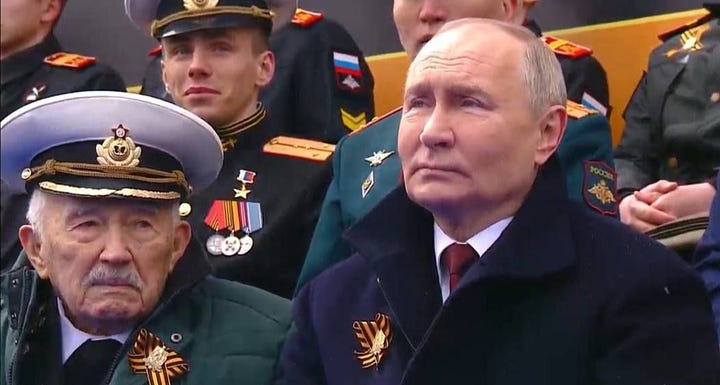
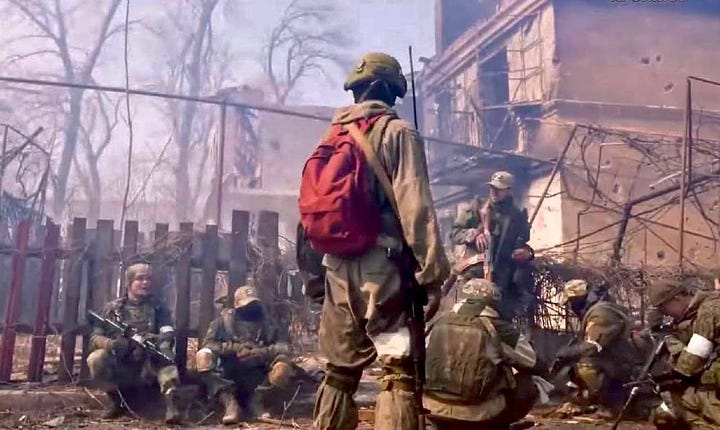
In fact, afterwards Putin honored the 810th, who now fight on the Kherson front around Khrynki, in another major way. In a round table session with all the top commanders, Putin heard the official plea of the brigade commander of the 810th himself, Major General Vlasov, and decided to officially expand the 810th—which has now grown from 2,500 men to over 11,000—into a full Division:
Isn’t it interesting how Ukrainian brigades all started at 5000-6000 men and are now mostly operating at 1000-2500 at most, while Russian brigades balloon from 2500 to 11k? And yet they tell us it’s Russia that’s taking the “unbearable losses”.
—
A quite unexpectedly rare sight occurred at the parade. A medaled Russian formation comprised of real SMO veterans took part. Consider the significance: these are among the only truly living decorated soldiers in the world who can lay claim to having fought and survived a real war. No other country presently can march real live, active duty, decorated heroes who’ve tasted real combat of this sort:
Lastly:
Putin honored his highschool teacher Vera Gurevich, who is still alive at 91 years old. She gave an insightful recollection of Putin in his youth, describing him as a humble warrior of justice:
Your support is invaluable. If you enjoyed the read, I would greatly appreciate if you subscribed to a monthly/yearly pledge to support my work, so that I may continue providing you with detailed, incisive reports like this one.
Alternatively, you can tip here: buymeacoffee.com/Simplicius


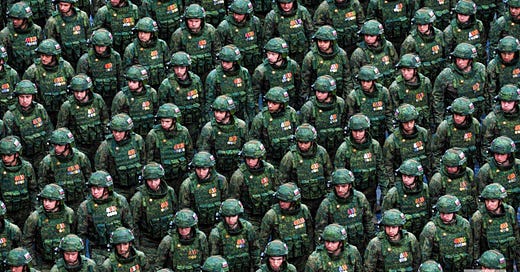


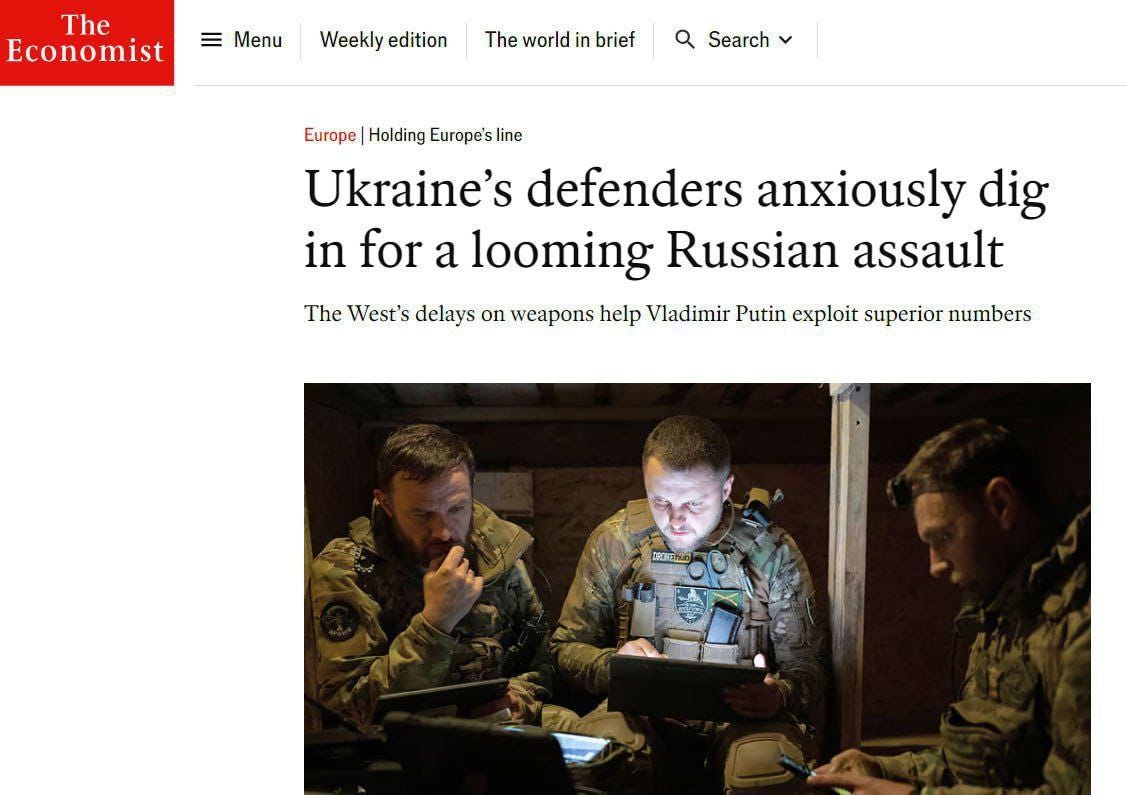
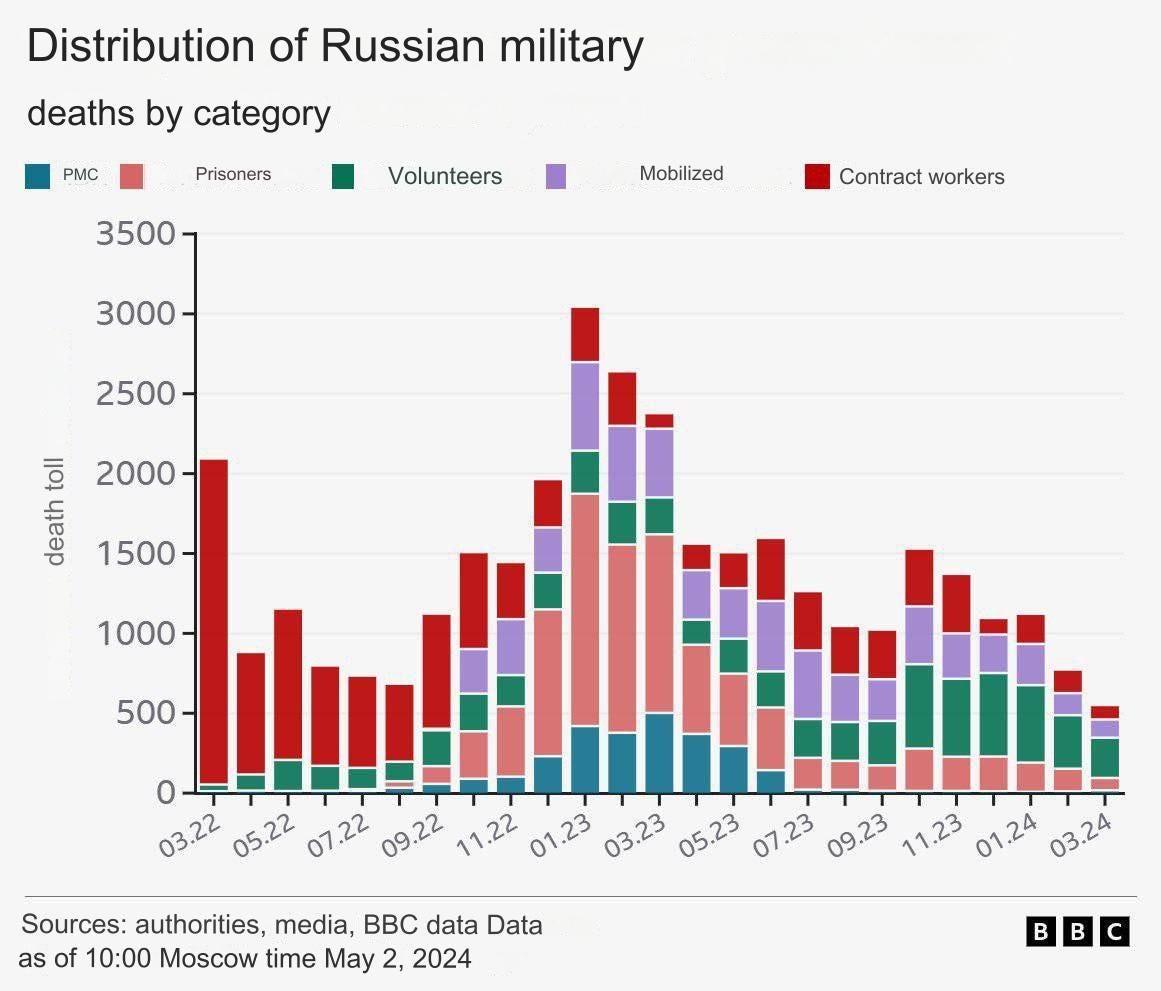

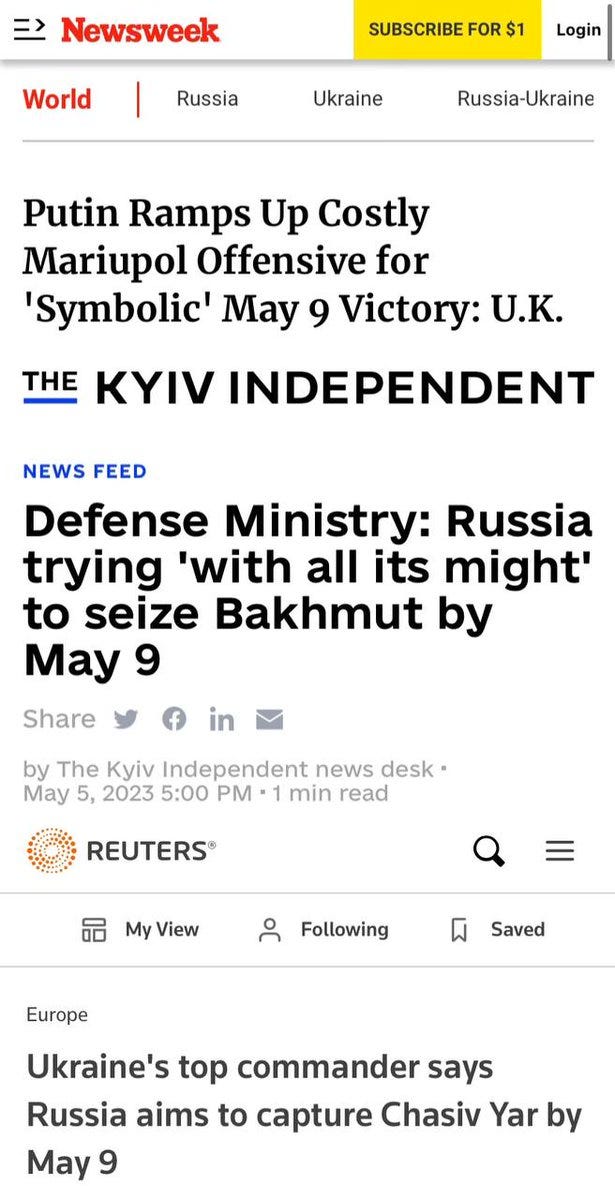
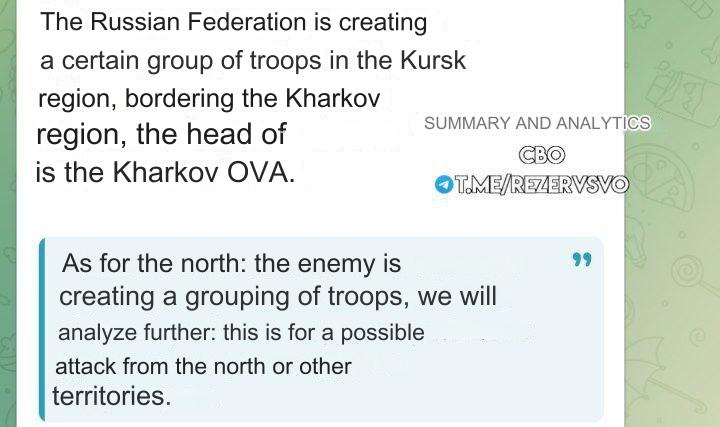
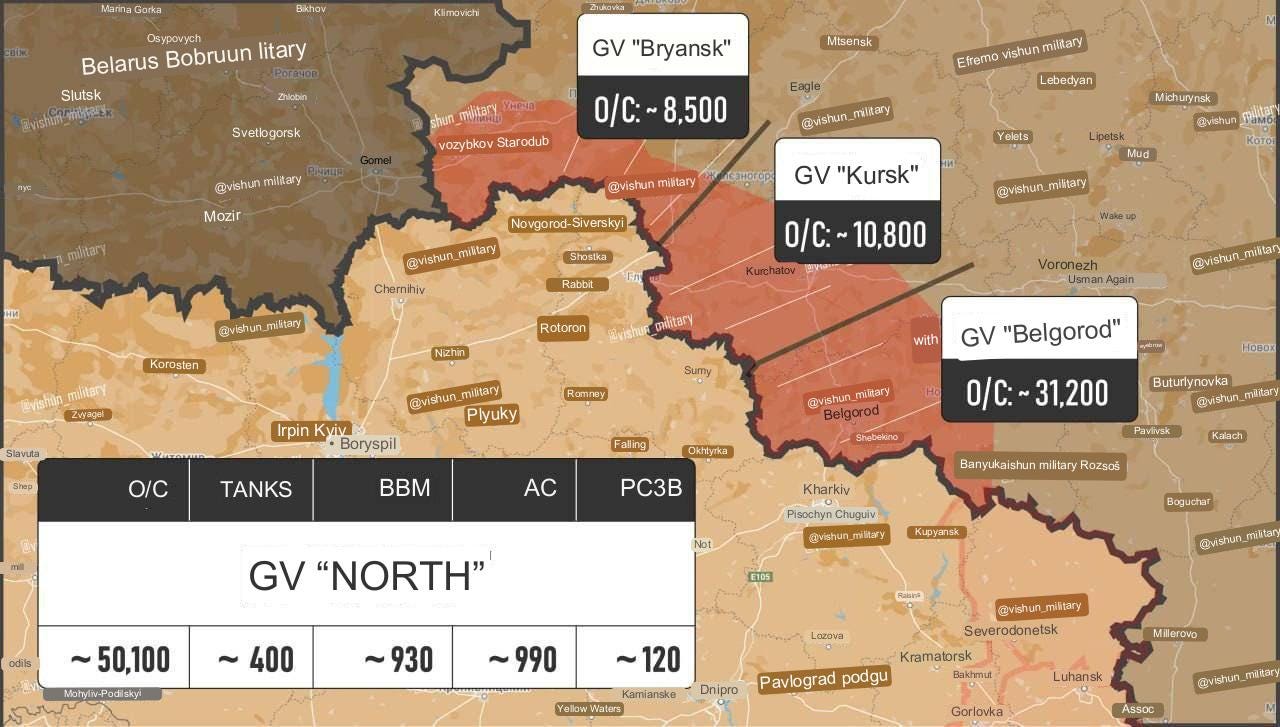

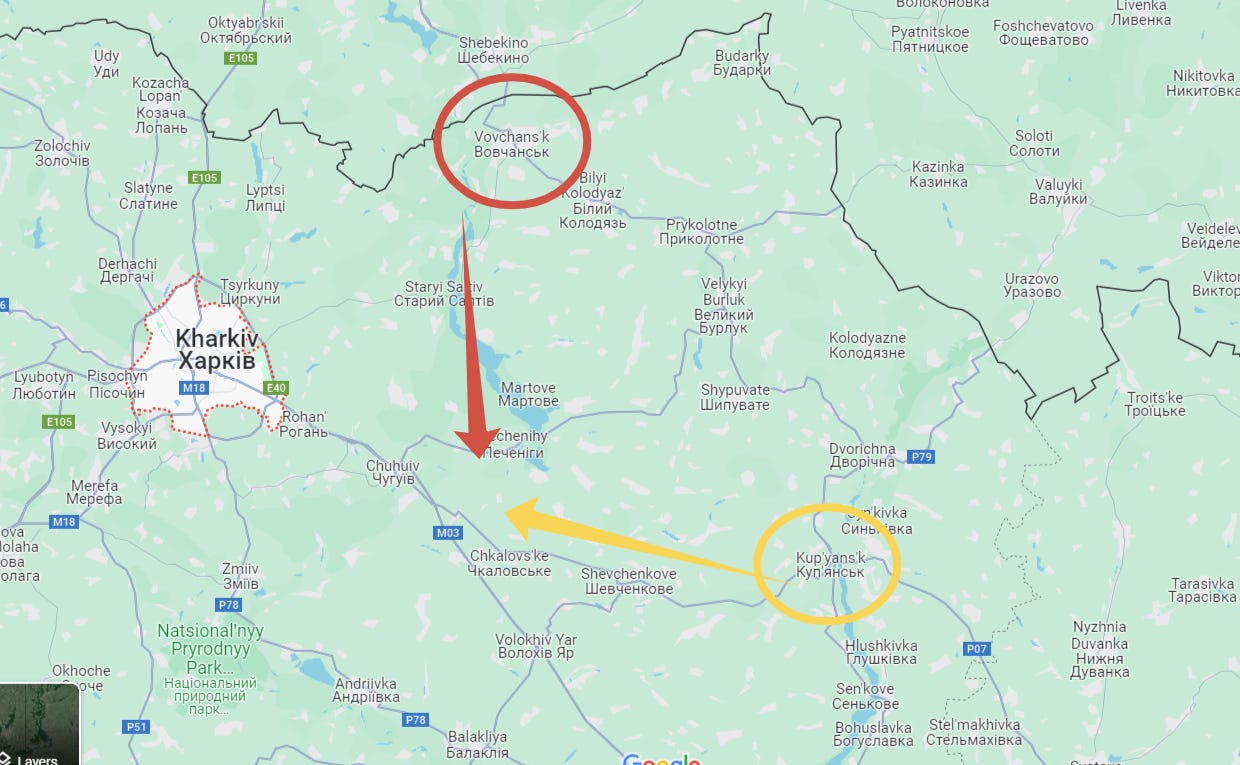
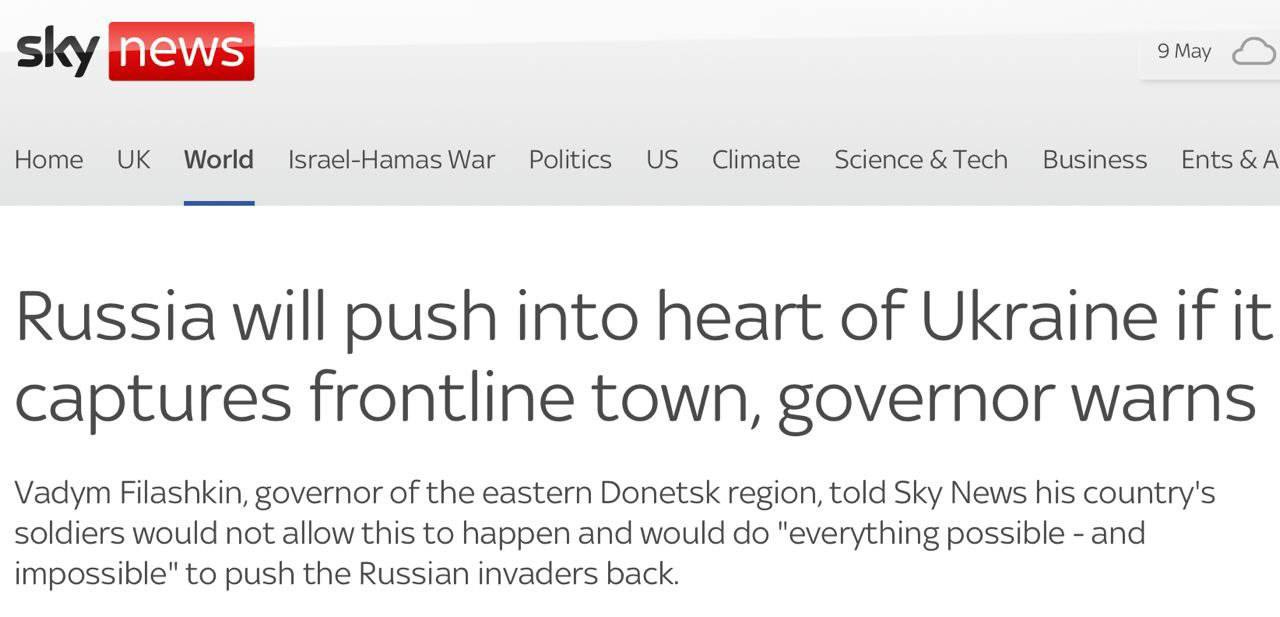
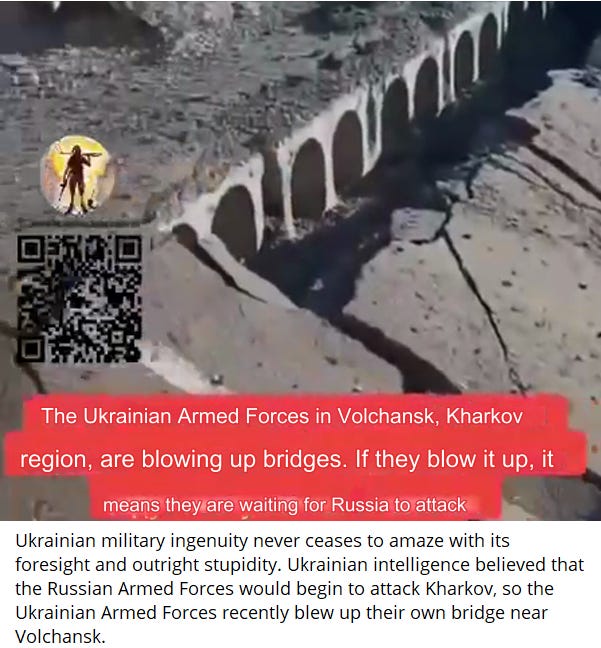


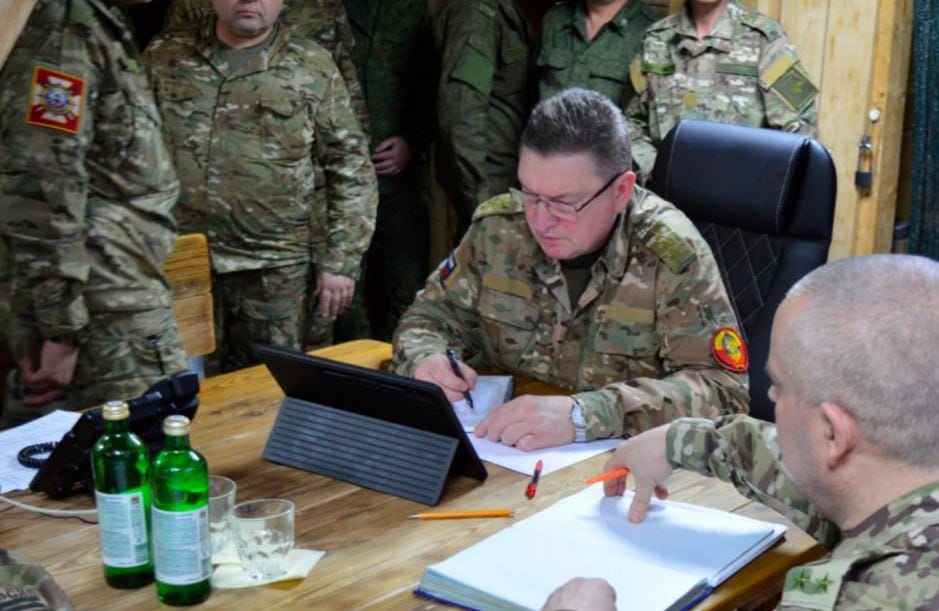
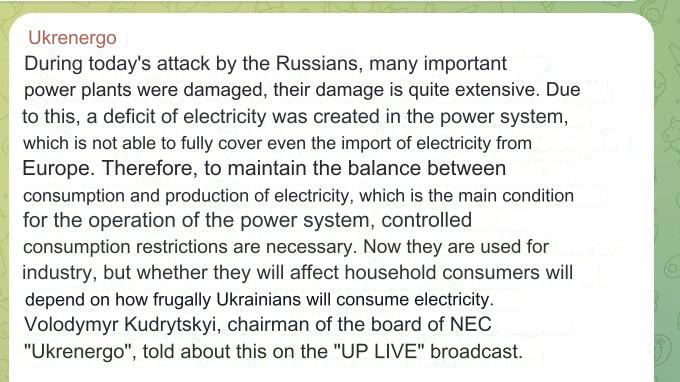


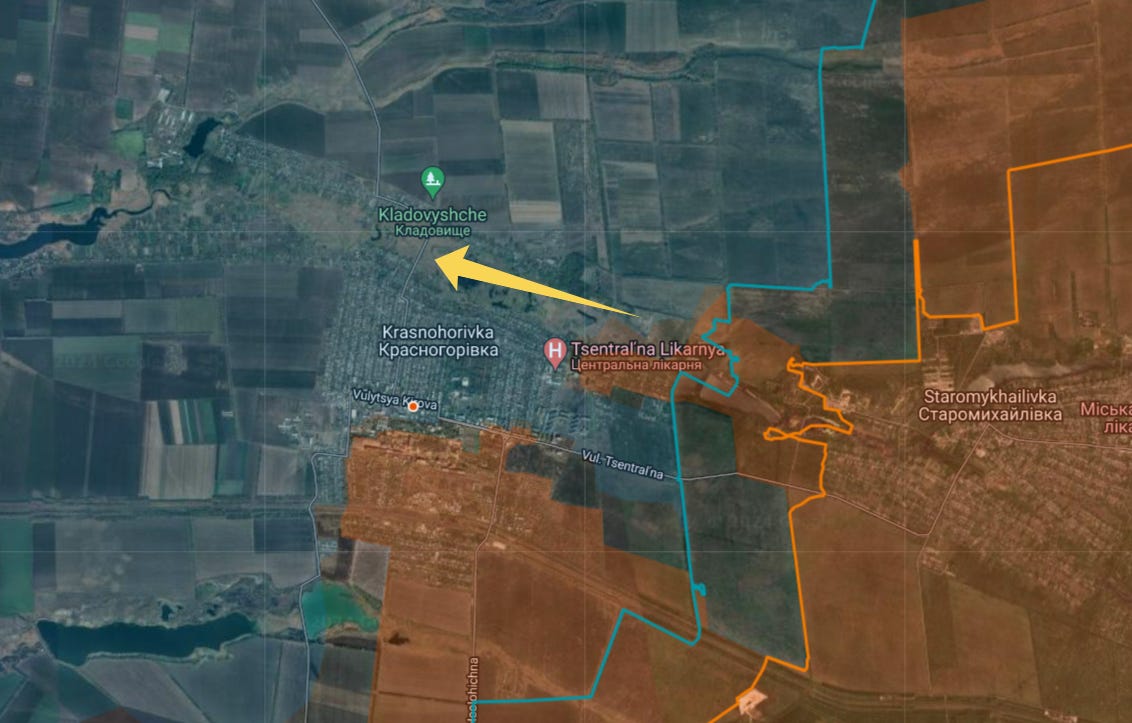
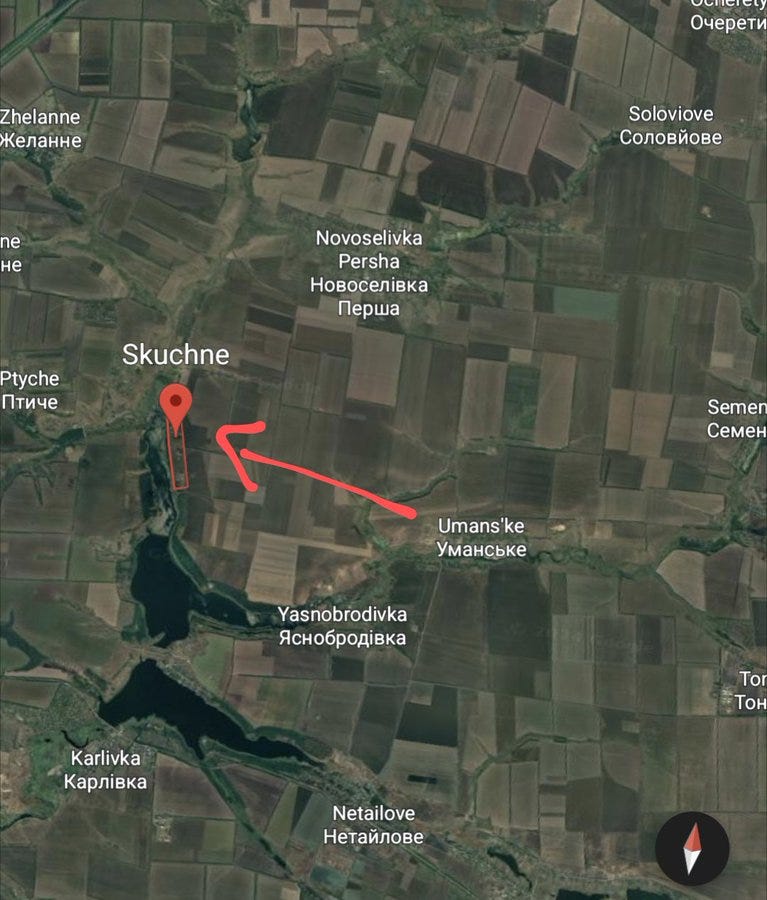
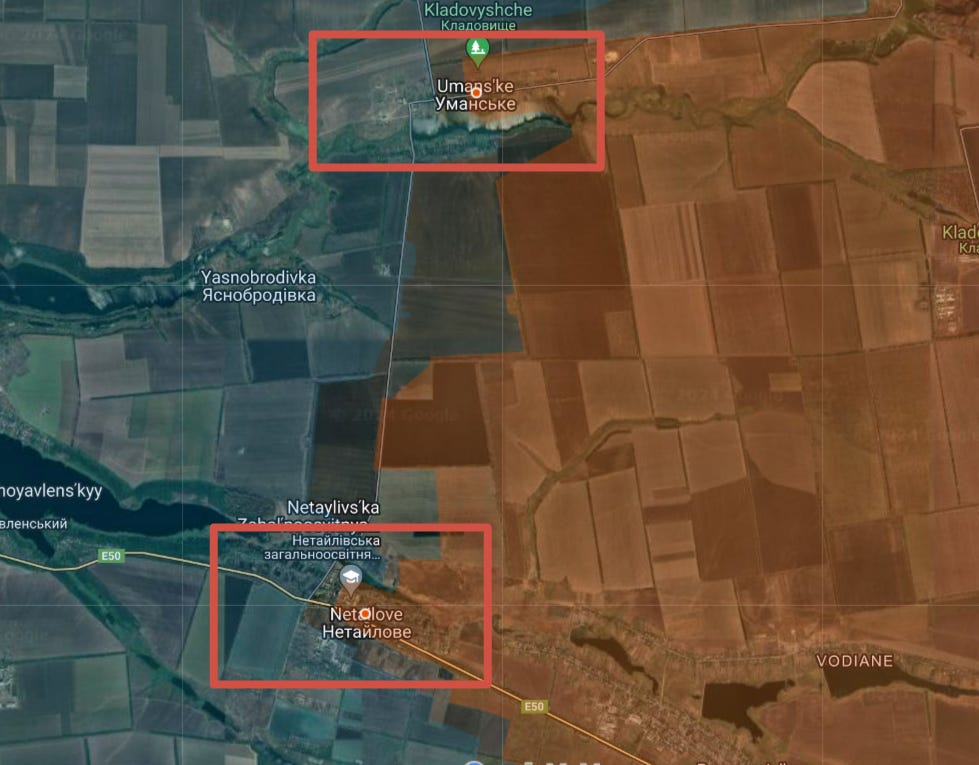

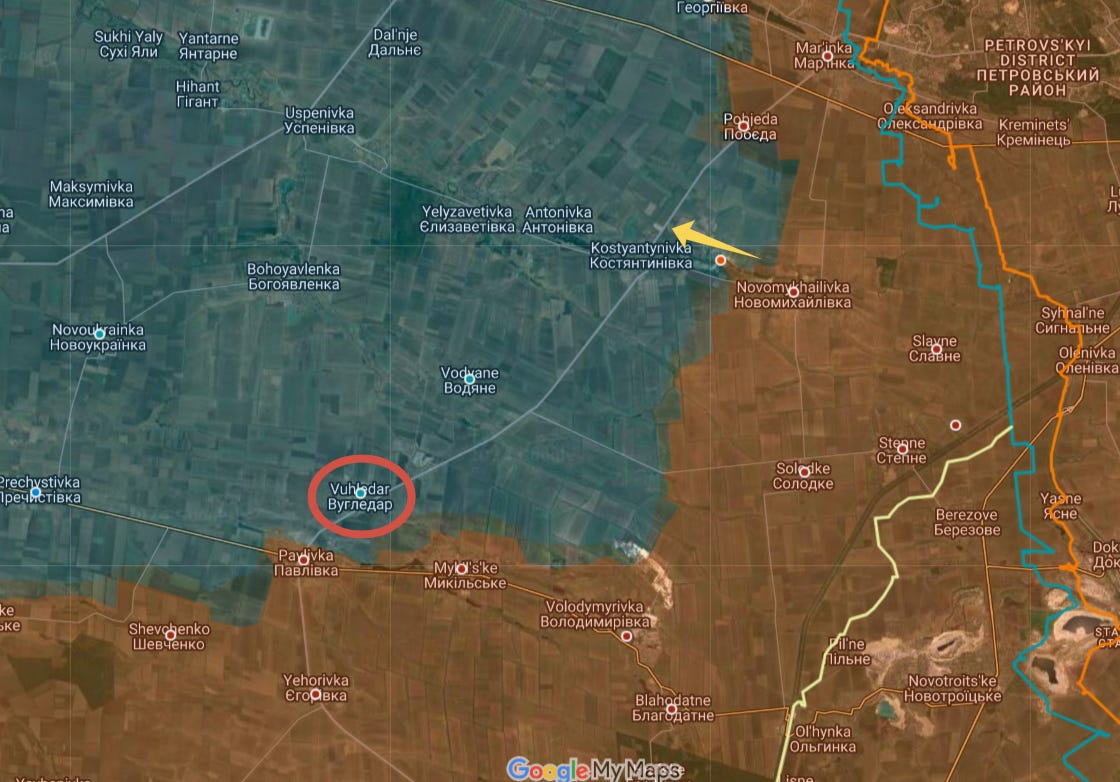
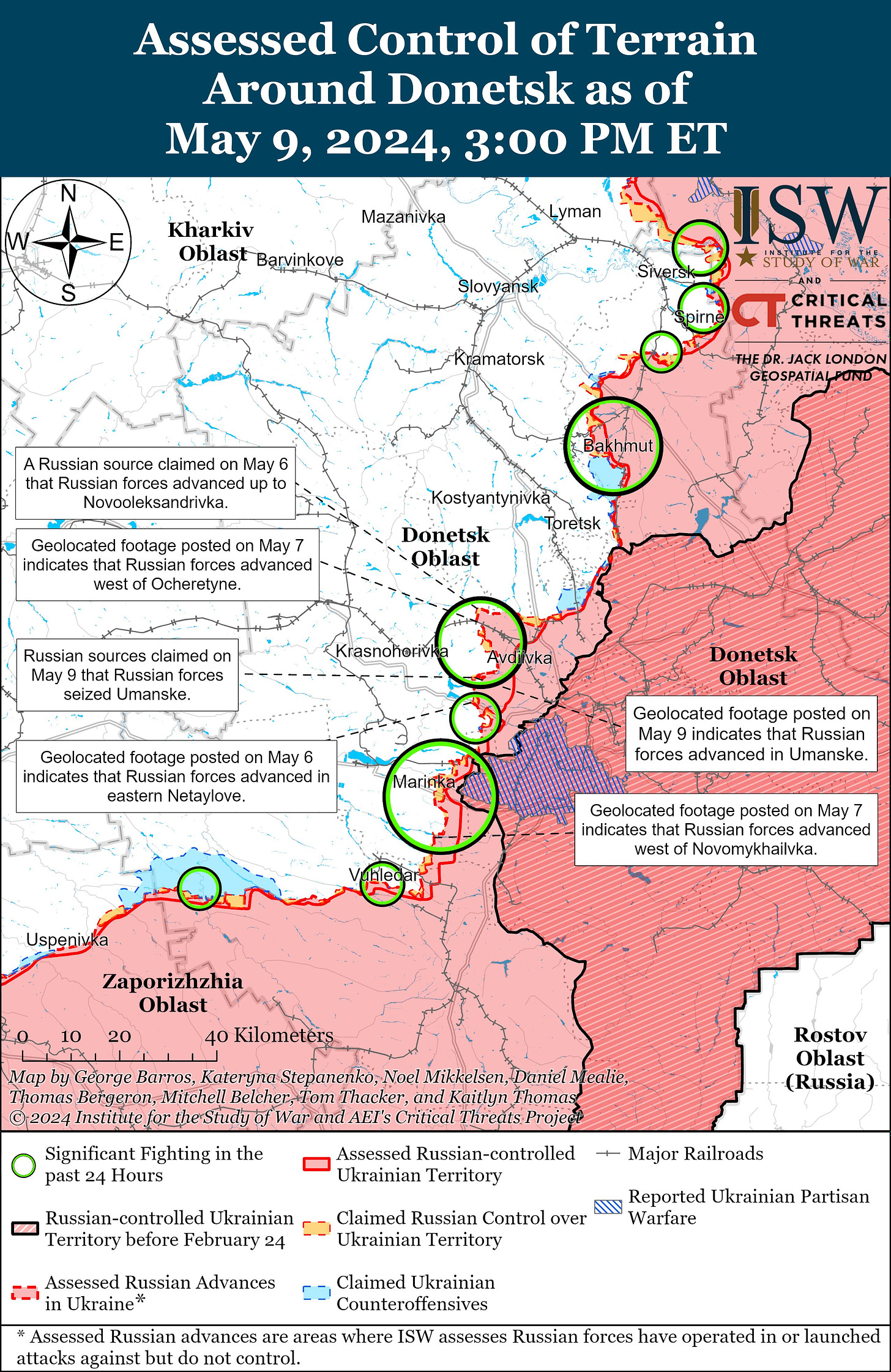
It sounds like our reporting here may have been prescient as breaking news states a massive Russian attack on Kharkov region has begun and some early reports even claim Russians already captured a village on the Ukrainian side of the Kharkov border.....has the big one begun? Or perhaps just a dry run for now....stay tuned
The slow motion collapse appears to be speeding up. Hope it doesn't take the rest of the house down with nuclear war or a lot of escalation.